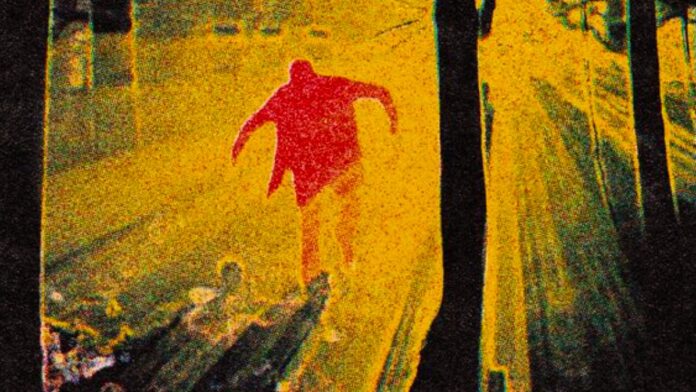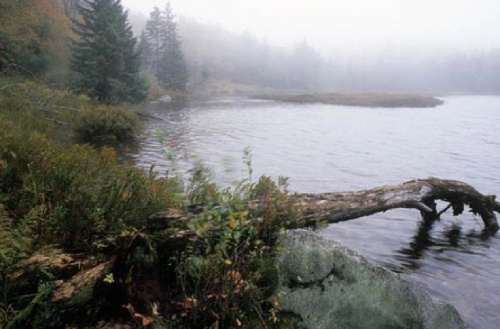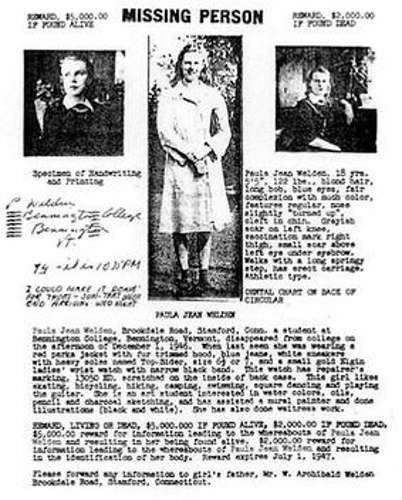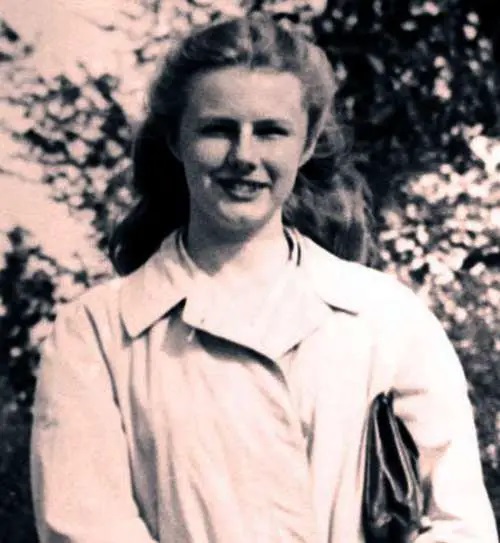You might be aware of the Bridgewater Triangle and the most famous Bermuda Triangle, but are you familiar with the Bennington Triangle of Vermont, which is home to more fascinating secrets than its fair share? Nobody has been able to adequately explain the inexplicable disappearances from Vermont’s Bennington Triangle and Glastenbury Mountain; some people assume a serial murderer, while others blame the paranormal. Learn more about the mysterious missing persons from Vermont’s Bennington Triangle.
Contents
What is Vermont’s Bennington Triangle?
The term “Bennington Triangle” was created by American writer Joseph A. Citro to describe a region in southwest Vermont where several people went missing between 1945 and 1950.
It is still unclear precisely what region is included in this “mystery triangle,” but it is said to be centered on Glastenbury Mountain and include some or most of the region of the nearby towns, particularly Bennington, Woodford, Shaftsbury, and Somerset. Both Glastonbury and its neighboring township, Somerset, were once moderately prosperous logging and industrial towns. Still, they started to decline in the late 19th century and are now essentially abandoned after the Vermont General Assembly was unincorporated in 1937.
In Citro’s novels, tales of paranormal occurrences have been reported about Glastonbury and the neighborhood for a long time; perhaps the most well-known of them is the story of Paula Jean Welden’s disappearance.
Who were the mysterious missing people?
The broader Glastonbury region was abandoned at the end of the 19th century as the logging boom petered out, and it is now largely pure wilderness that is isolated even by Vermont standards. The now-abandoned village has been the haunting scene of several inexplicable disappearances, unsolved murders, and strange sightings that continue to this day, beginning with a streak of missing individuals over 70 years ago. Below we have presented the most mysterious missing people of that time.
Middie Rivers
Middie Rivers an experienced woodsman, age 74, vanished while out hunting on November 12, 1945, close to Long Trail Road and Vermont Highway 9. This was the first disappearance. Rivers was traveling to the mountains for a weekend of hunting with four other hunters. On the morning of November 12, 1945, Rivers and his son-in-law, Joe Lauzon, were walking together when they came to a crossroads, where both Rivers and Lauzon’s paths diverged. Rivers promises Lauzon that he will “travel just a short distance and meet them” before joining them for lunch at the camp.
The left members of the hunting group started looking for Rivers after 3 o’clock. The only thing that was uncovered after a thorough search was a solitary rifle cartridge that was located in a creek. The idea was that Rivers had bent over and the cartridge had fallen into the water from his pocket.
Soon Middie Rivers’ disappearance signaled the start of five years of disappearances in the Bennington Triangle. Many still held out hope that this experienced woodsman would manage to live and shortly reappear in town after an initial search that was fruitless. This wasn’t the case, though. Soon, more than 300 worried townspeople and U.S. Army soldiers were sent from Fort Devens in Massachusetts to look for him but after wandering for eight days in the vast wilderness they found nothing about Rivers.
Paula Welden
On December 1, 1946, Paula Jean Welden, then 18 years old, vanished. The Long Trail was the destination of Welden’s walk, she was a sophomore at Bennington College. Ernest Whitman, a worker at the Bennington Banner who had given her directions, was among those who watched her leave. It was 50 °F outdoors when she started, later dipping to 9 °F, and she wasn’t wearing a jacket. It was said that an elderly couple who were roughly 100 yards (91 m) behind Welden saw her on the route itself. They said that she rounded a curve in the route and vanished by the time they arrived at the same spot. No trace of her was ever discovered despite a thorough search that included the posting of a $5,000 prize and assistance from the FBI.
The disappearance of Paula Welden was possibly the most notorious missing persons case in Vermont history. No hints about her whereabouts were ever found despite the enormous turnout, several planes used, and diversity of cooperating law enforcement authorities. The lack of advanced procedures used by the police in handling the case was condemned by many, including Welden’s father. This case served as the impetus for the Vermont State Police’s establishment seven months later. The investigation is still ongoing today.
James Tedford
Veteran James E. Tedford vanished on December 1, 1949, precisely three years after Welden was last seen. Tedford, a resident of the Bennington Soldiers’ Home, had been in St. Albans visiting family when he was last seen to a nearby bus stop. Witnesses said that Tedford boarded the bus and remained there until the bus arrived in Bennington. He disappeared anywhere between the previous stop and Bennington. His possessions were still in the luggage rack, and his empty seat was occupied by an open bus schedule. In response to this assertion, Tony Jinks states “As with many missing person stories, there is a lag between when he was last seen and when he was reported missing a week or so later, contrary to the widely held belief that he disappeared into thin air while riding the bus. Tedford vanished, but there is enough proof to show he didn’t “Even though he was never located, he was able to “dematerialize.”
This time Bennington Triangle’s more eerily paranormal disappearances occurred. This seems unacceptable that Tedford had remained in his seat as late as the last stop before Bennington, according to several witnesses, including the driver, who later corroborated this. Tedford was not there when the bus arrived in Bennington, though. Confused passengers saw that Tedford’s bags and an open bus timetable were still on his seat after he implausibly vanished into thin air while in a moving vehicle.
Paul Jepson
Paul Jepson, an 8-year-old, traveled with his mother in a truck at a landfill on October 12, 1950. For over an hour, she fed several pigs while her son was happily playing in the family pickup vehicle but when she came back to see her son, her son was nowhere to be seen, he was disappeared completely.
Teams of searchers were organized to hunt for the kid. Jepson was wearing a bright red cloth and he should be noticeable, but nothing was ever located. Bloodhounds allegedly followed the young man to the same local roadway where Welden vanished four years previously, by local lore.
A bloodhound was called in by a sheriff in New Hampshire to help find the missing youngster in addition to the hundreds of others who had gathered for the search. Although the dog was able to detect his smell, the track abruptly disappeared at a nearby intersection, raising the possibility of a possible car abduction.
Some speculated that Jepson died young at the hands of his parents and became pig food while the case went on indefinitely. However, in line with the unsettling atmosphere of the Bennington Triangle, the boy’s father suggested to the Albany Times Union that since his son had “talked of nothing else for days” before going missing, it was maybe “the lure of the mountains” that drew him in.
Frieda Langer
Two weeks later, on the Somerset section of the Long Trail abutting east Glastonbury, a 53-year-old Frieda Langer went missing. She was an experienced hiker and survivalist who was familiar with the region. She and her cousin Herbert Elsner went camping next to the Somerset Reservoir. Langer stumbled and fell into a brook while traveling. She said Elsner to wait, and said she would return to the encampment, change, and then follow after him. Elsner returned to the campground in search of Frieda Langer after she failed to do so and found that no one had seen her since they had gone.
The Vermont Aeronautics Commission, the Connecticut Coast Guard, and the US Army in Massachusetts all sent helicopters, and airplanes were carried out over the following two weeks. Up to 400 individuals, including members of the Massachusetts National Guard, thoroughly investigated the area but the search turned up nothing of Langer and all came up empty-handed.
However, on May 12, 1951, they quickly discovered Langer’s body discovered, and this was the only reported disappearance from the Bennington Triangle in which a corpse was later discovered. Langer’s body was discovered close to the Somerset Reservoir six months after she vanished; oddly, this was an open area that had been thoroughly searched multiple times during the preceding months. The body was discovered three and a half miles from the campground, in a location that had only been sparingly investigated seven months earlier. Due to the state of her remains, no cause of death could be confirmed. Except for the broad geographic location and time frame, no particular linkages have been found to link these cases together directly.
Even yet, there was little progress in the case. Because the body had decomposed so badly, it was impossible to identify what caused her death, which fueled further wild theories about the unsettling death she could have endured.
Conclusion
Many have speculated wildly about the possibilities of evil and maybe paranormal powers at work because of the fascinating mysteries and inexplicable happenings connected with the Bennington Triangle. This idea has been supported by reports of UFO and Bigfoot sightings in the area.
Others think that a serial murderer may have been responsible for the sudden increase in missing people between 1945 and 1950. However, the absence of any supporting evidence and the diversity of the victims’ ages and genders (contrary to the traditional patterns of serial killers) probably rule out that notion as well.
Others continue to maintain that a native mountain cat like a lynx, bobcat, or cougar killed the vanished people with its claws. Mountain lions have not been genuinely observed since around 1940, although bobcats and lynxes are not known to be violent toward people.
Overall, there isn’t much to go on when attempting to connect the disappearances to unravel the mystery. The proximity of the disappearances, the time of day when most were last seen (between 3 p.m. and 4 p.m.), and the season when most were last seen (the last three months of the year) are the only known parallels among the most thoroughly investigated cases in the Bennington Triangle.
Furthermore, despite a lack of supporting data, paranormal beliefs have gained ground about the instances. Such hypotheses fit with other, more recent strange events in the Bennington Triangle region. These occurrences include the claimed appearance of frightful voices on dead-air radio, sightings of enigmatic people, illogical navigational errors, and planes that inexplicably crash. So it comes as no surprise that the Bennington Triangle will continue to draw those who think the strange.
Sources
- Stone, Roberta. “Roberta Stone: Looking back on unexplained disappearances”. Brattleboro Reformer.
- “Shirley Jackson’s Horror Novel ‘Hangsaman’ Was Inspired By A Real-Life Disappearance”. Bustle.
- “James Tedford Missing”. Burlington free press. 1949.
- Jinks, Tony (30 September 2016). Disappearing Object Phenomenon: An Investigation. McFarland. p. 12. ISBN 978-0-7864-9860-4.
- Dooling, Michael C. Clueless in New England: The Unsolved Disappearances of Paula Welden, Connie Smith, and Katherine Hull. The Carrollton Press, 2010.
FACT CHECK: We strive for accuracy and fairness. But if you see something that doesn’t look right, please Contact us.
DISCLOSURE: This Article may contain affiliate links and Sponsored ads, to know more please read our Privacy Policy.
Stay Updated: Follow our WhatsApp Channel and Telegram Channel.

















